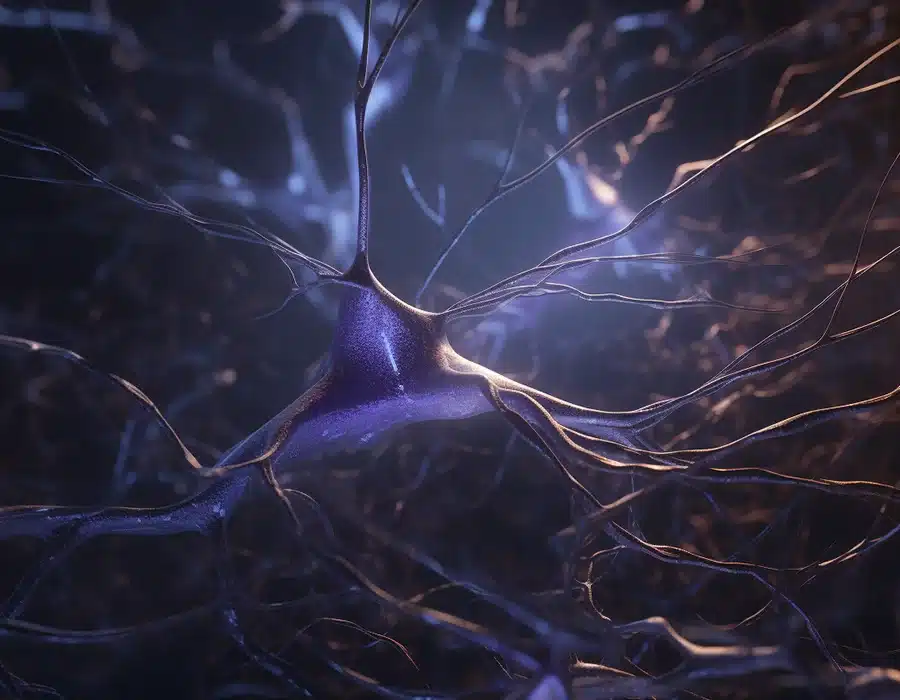How Does Meditation Work? I used to think meditation was something reserved for calm, serene individuals who seemed to have their lives perfectly in order. The idea of sitting still, emptying my mind, and finding peace in silence felt completely out of reach for someone like me—someone who was always on the go, filled with racing thoughts, and constantly feeling the weight of stress. I remember the first time I tried meditating. I sat down, closed my eyes, and immediately felt my body become tense. My mind didn’t quiet—it became a swirling storm of worries, to-do lists, and anxious thoughts. I was supposed to be relaxing, but instead, I was getting frustrated with myself for not being able to just “turn off” my mind.
I’d always heard about the benefits of meditation—how it could reduce stress, help you feel more grounded, and increase your sense of peace. But, like many others, I had a lot of misconceptions. I thought meditation was about stopping all thoughts and reaching some kind of blissful mental state right away. What I didn’t realize was that meditation is not about perfection or quieting the mind at all; it’s about learning how to change the way you relate to your thoughts, your feelings, and your body. It’s a practice, a journey, not a destination. And when I finally embraced that idea, everything started to shift.
Over the years, I kept trying, stumbling and learning along the way. At first, meditation was difficult. My thoughts felt louder than ever, and I often found myself wondering if I was doing it all wrong. But as I slowly incorporated meditation into my daily routine, something started to change. The moments of stillness, however brief, became easier to sit with. The racing thoughts started to settle. I began to notice small but significant changes in how I felt—less anxious, more present, and more attuned to my body and emotions. Meditation didn’t fix everything overnight, but it gave me the tools to manage the overwhelm and stress that had previously seemed insurmountable.
If you’ve ever felt that frustration or wondered if meditation is really for you, I want to tell you that it is. It’s not about getting it “right,” it’s about showing up, being patient, and practicing self-compassion. In this article, I’ll walk you through the science behind meditation, share more about my personal experience, and explore how meditation can improve every aspect of your life. So, if you’re ready to take that first step into stillness, let’s dive in together.

The Science Behind Meditation
Meditation is one of those practices that’s often seen as mystical or esoteric, but in recent years, science has been diving deep into understanding how it works and why it has such profound effects on the mind and body. It turns out that meditation isn’t just some spiritual practice—it has real, tangible effects on the brain and nervous system. So, what exactly happens when we meditate? Let’s break it down.
Meditation and the Brain: Changing How We Think
At its core, meditation is about changing the way we engage with our thoughts and emotions. It’s not about stopping thoughts completely, but rather creating a space between ourselves and our thoughts. This allows us to observe them without becoming overwhelmed by them. But what’s happening in the brain during this process?
Research has shown that regular meditation can actually change the structure of the brain, particularly in areas that are associated with memory, learning, and emotional regulation. For example, one study conducted by Harvard University found that mindfulness meditation can increase the gray matter in the hippocampus, a brain region responsible for memory and learning. This means that over time, meditation can help you retain and process information better.
But the effects aren’t just limited to memory. Meditation has been shown to impact the prefrontal cortex, which is responsible for higher-level cognitive functions like decision-making and self-control. This is why people who meditate regularly often report feeling more focused, less impulsive, and able to handle stress more effectively.
Reducing Stress: The Role of the Parasympathetic Nervous System
One of the most well-known benefits of meditation is its ability to reduce stress, but how does this happen at a physiological level? The answer lies in the autonomic nervous system (ANS), which controls many of our body’s involuntary functions, such as heart rate and digestion.
There are two branches of the ANS: the sympathetic nervous system (SNS), which is responsible for our “fight or flight” response, and the parasympathetic nervous system (PNS), which promotes relaxation and recovery. Meditation activates the PNS, which helps lower heart rate, blood pressure, and stress hormones like cortisol. This shift from the “fight or flight” mode to the “rest and digest” mode is key in reducing anxiety and promoting a sense of calm.
Studies have shown that regular meditation can help balance the autonomic nervous system, making it easier to cope with stressful situations. In one experiment, participants who practiced mindfulness meditation for just eight weeks showed a significant reduction in cortisol levels compared to a control group. This means that meditation isn’t just a quick fix for stress—it has long-term effects that can help you better manage life’s challenges.

The Amygdala and Emotional Regulation
Another fascinating finding from neuroscience is how meditation can impact the brain’s emotional regulation system, specifically the amygdala. The amygdala is a small almond-shaped structure in the brain that plays a central role in processing emotions, particularly fear and anxiety. When we experience stress, the amygdala becomes more active, triggering the release of stress hormones and putting us in a heightened state of alert.
However, studies have shown that meditation can reduce the reactivity of the amygdala. In one study, participants who underwent an eight-week mindfulness-based stress reduction program showed a decrease in amygdala activity in response to emotional stimuli. This suggests that meditation not only helps reduce the intensity of our emotional reactions, but it also helps us respond more calmly and rationally to stressors.
By helping regulate the amygdala, meditation gives us a greater sense of emotional resilience. Instead of immediately reacting with anxiety or fear, we develop the ability to pause, observe our emotions, and respond more thoughtfully. This is why meditation is often recommended as a strategy for anxiety and overthinking.
Brainwave Activity: Shifting Into a Calmer State
When you meditate, your brain shifts from a busy, active state to a more relaxed, focused state. This is reflected in changes in brainwave activity. Brainwaves are electrical impulses in the brain that occur at different frequencies, and they can be categorized into five types: delta, theta, alpha, beta, and gamma.
During meditation, especially deep meditation, the brain tends to shift from faster beta waves (which are associated with active thinking and alertness) to slower alpha and theta waves. Alpha waves are linked to relaxation, creativity, and a calm, yet alert, state of mind. Theta waves, which are associated with deep relaxation and light sleep, are often observed in deep meditation states. This shift in brainwave activity is one of the reasons why people report feeling so calm, focused, and rejuvenated after meditation.
Interestingly, these changes in brainwave patterns don’t just happen while meditating—they can also persist for hours afterward, helping to maintain a sense of calm and focus throughout the day.
Meditation and Mindfulness: Strengthening the Brain’s “Attention Network”
Mindfulness meditation, in particular, has been shown to enhance the brain’s ability to focus and sustain attention. This type of meditation involves paying full attention to the present moment, whether it’s through focusing on the breath or bodily sensations, and observing thoughts and emotions without judgment.
Studies using brain imaging have found that regular mindfulness meditation can strengthen the brain’s “attention network,” which is responsible for regulating focus and attention. This means that people who meditate regularly are better able to concentrate, stay on task, and avoid distractions. In fact, research has shown that after just eight weeks of mindfulness practice, participants showed increased gray matter density in the anterior cingulate cortex, a part of the brain that is involved in regulating attention and managing cognitive control.
This enhanced attention network can have a positive impact on all aspects of life, from work performance to personal relationships. It’s one of the reasons why meditation is such a powerful tool for improving mental clarity and focus.

Personal Journey: From Restlessness to Peace
When I first started meditating, I struggled to sit still. My mind would wander to my to-do list, unresolved conversations, or random memories. I’d constantly peek at the clock, wondering if I’d lasted even three minutes. But I persisted.
Gradually, something shifted. I began to notice a newfound patience—not just with meditation but with life itself. The moments of stillness grew longer, and my mind felt less cluttered. One day, after a particularly chaotic morning, I sat down to meditate and felt a wave of calm wash over me. It wasn’t about escaping my stress but about facing it with a different perspective.
Meditation became my anchor, especially during challenging times. Whether it was a difficult workday or moments of self-doubt, the practice reminded me to return to my breath and find stability within myself. It wasn’t always easy, but it was always worth it.
Types of Meditation and How They Work
Meditation comes in many forms, each offering unique benefits and approaches to self-discovery:
Mindfulness Meditation
This is one of the most popular practices, where you focus on your breath, sensations, or surroundings. The goal is to stay present without getting caught up in thoughts or judgments. Mindfulness meditation helps create a sense of grounding and awareness in daily life.
Loving-Kindness Meditation
Also known as metta meditation, this practice involves cultivating compassion by silently repeating phrases like, “May I be happy, may I be healthy,” and extending these wishes to others. This type of meditation rewires the brain to promote empathy and connection.
Body Scan Meditation
In a body scan, you direct your attention to different parts of your body, noticing sensations and releasing tension. This practice is excellent for improving physical awareness and relaxation.
Mantra Meditation
By silently repeating a word, phrase, or sound, such as “Om,” mantra meditation helps quiet the mind and center your thoughts. It’s particularly helpful for maintaining focus.
Each type of meditation engages the brain differently, yet they all share a common goal: to cultivate a deeper connection to yourself and the present moment.

Incorporating Meditation into Your Life
Starting a meditation practice doesn’t have to be daunting. In fact, small, consistent steps can make a big difference.
Start Small
If you’re new to meditation, begin with just five minutes a day. Sit in a quiet space, close your eyes, and focus on your breath. You don’t need a fancy setup—just a comfortable spot where you can sit undisturbed.
Choose a Method
Experiment with different meditation styles to find one that resonates with you. Apps like Calm and Headspace offer guided meditations tailored to beginners, making it easier to stay on track.
Build a Routine
Consistency is key. Whether you meditate in the morning to set the tone for the day or in the evening to unwind, making it a daily habit will help you reap the benefits over time.
Reflect and Adjust
Consider pairing meditation with journaling or another reflective activity. Writing down your thoughts after a session can provide clarity and track your progress.
The Role of Microdosing in Deepening Meditation
As my meditation practice deepened, I became curious about microdosing psilocybin—a growing trend in wellness circles. Microdosing involves taking sub-perceptual doses of psilocybin, the active compound in magic mushrooms, to enhance focus, creativity, and mindfulness.
For me, combining microdosing with meditation opened new doors. I found it easier to quiet my racing thoughts and tap into a deeper sense of presence. Research supports this synergy, suggesting that psilocybin can promote introspection and amplify the benefits of mindfulness practices.
Of course, microdosing isn’t for everyone, and it’s essential to approach it responsibly. But for those seeking to deepen their meditation journey, it can be a powerful tool.
Benefits of Meditation: A Holistic Approach
Meditation has transformed my life in countless ways. It’s helped me manage anxiety, sharpen my focus, and improve my sleep. But beyond these tangible benefits, meditation has taught me how to find stillness amidst life’s chaos.
This practice isn’t just about feeling calm in the moment—it’s about cultivating resilience, balance, and a deeper connection to yourself. Over time, meditation becomes more than a habit; it becomes a way of life.

Start Your Meditation Journey with Magic Mush
Meditation is not just a practice; it’s a transformative journey, one that requires patience, consistency, and a willingness to explore the deeper layers of your mind. Through my personal journey, I’ve learned that meditation isn’t about perfection—it’s about learning to sit with your thoughts, emotions, and sensations, embracing stillness amidst the chaos of daily life. Whether it’s a few minutes of mindfulness or deeper introspection, meditation offers profound benefits, from reducing stress and anxiety to enhancing focus and emotional regulation. As you continue your journey, remember that each breath and moment of awareness is a step towards greater peace and clarity.
But what if you could take your meditation practice even further? Magic Mush is here to support you in that journey. By offering premium, high-quality magic mushrooms and psilocybin products, Magic Mush provides a unique opportunity to deepen your meditation practice and unlock new layers of consciousness. Our products are tested rigorously to ensure safety and purity, allowing you to explore the therapeutic potential of psychedelics in a controlled, mindful environment.
At Magic Mush California, we are committed to education and promoting safe, responsible use of psilocybin. Our goal is to destigmatize magic mushrooms and empower individuals to experience the transformative benefits of these natural wonders. We offer a variety of products that complement your meditation and wellness practices, helping you unlock the full potential of your mind. Join our community and experience exceptional customer support, privacy, and seamless online shopping. Whether you’re a seasoned practitioner or a beginner, Magic Mush is here to guide you every step of the way.
Explore our shop today, and begin your journey towards a more connected, peaceful, and mindful life. With the support of Magic Mush, you can elevate your meditation practice and discover the transformative benefits of psilocybin in a safe and empowering environment.




